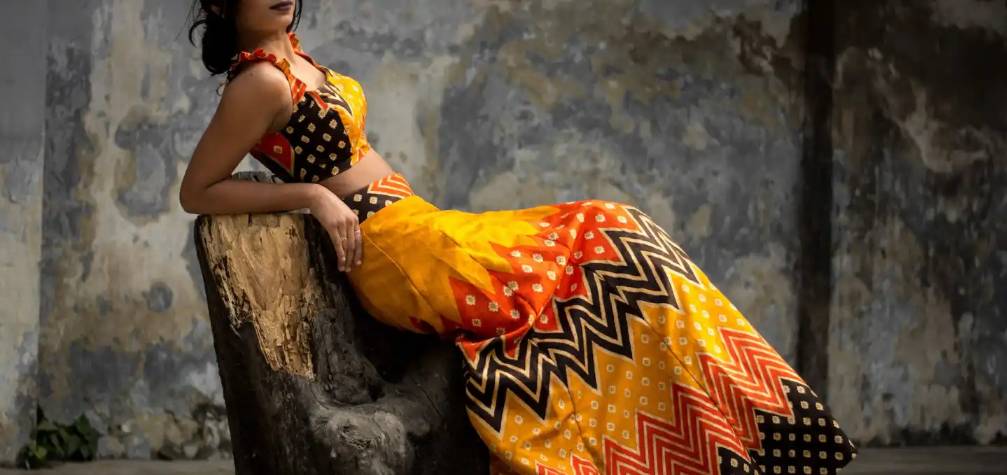Indian Fashion: A Colorful Journey Through Traditional Attire
5 min read
29 Jun 2025
India, a land known for its rich cultural diversity, boasts a fashion heritage that is as diverse and vibrant as the country itself. Indian fashion has evolved over centuries, blending tradition with modernity to create a tapestry of styles, colors, and textiles. In this article, we'll take you on a colorful journey through India's traditional attire, exploring the history, significance, and evolution of some of the most iconic garments.
1. Sari: Timeless Elegance
The sari is perhaps the most iconic and recognizable Indian garment. This unstitched piece of fabric, typically six to nine yards in length, is draped around the body in various styles, each representing a different region of India. Saris come in a myriad of fabrics, from silk to cotton, and are often adorned with intricate embroidery, embellishments, and designs. The sari transcends generations and is worn on various occasions, from daily life to weddings and festivals.

2. Lehenga Choli: Royal Splendor
The lehenga choli is a traditional three-piece ensemble consisting of a flared skirt (lehenga), a fitted blouse (choli), and a dupatta (scarf). It is a popular choice for weddings and special occasions, known for its opulent embroidery, vibrant colors, and intricate designs. Lehenga cholis are often passed down through generations, making them both a fashion statement and a treasured heirloom.
3. Sherwani: Regal Men's Attire
The sherwani is a traditional men's outfit characterized by its long, button-down coat. It is often paired with churidar pants or dhoti and worn on formal occasions, including weddings and celebrations. The sherwani's intricate embroidery and rich fabrics exude an aura of regality, making it a symbol of grace and sophistication.
4. Anarkali Suit: Graceful and Timeless
The Anarkali suit is named after the legendary dancer Anarkali and is known for its flowy silhouette with a fitted bodice and flared skirt. These suits are often adorned with intricate embroidery, making them a go-to choice for formal events and celebrations. Anarkali suits come in various lengths, from floor-length to knee-length, catering to different styles and preferences.
5. Dhoti Kurta: Traditional Comfort
The dhoti kurta is a traditional men's outfit that exudes simplicity and elegance. It consists of a dhoti, a piece of unstitched cloth that is draped around the waist and legs, and a kurta, a long tunic-style top. Dhoti kurtas are widely worn during religious ceremonies and festivals. While they may appear simple, the art lies in the way they are draped, showcasing the wearer's sartorial skills.
6. Bandhgala Suit: Modern Classic
The bandhgala suit, also known as the Nehru jacket, is a contemporary take on traditional Indian menswear. It features a high-collared, button-down jacket paired with trousers or churidar pants. The bandhgala suit has become a popular choice for formal occasions and has even made its mark on the international fashion scene.
7. Patola Sari: The Art of Ikat
Patola saris are a testament to India's rich textile heritage. These double ikat saris are handwoven with precision, featuring intricate geometric patterns and vibrant colors. They are a symbol of luxury and craftsmanship, often passed down as heirlooms. Patola saris are highly sought after and are considered a prized possession.
8. Phulkari Dupatta: Vibrant Embroidery
Phulkari, which means 'flower work,' is a traditional embroidery technique from Punjab. Phulkari dupattas are known for their vibrant and intricate threadwork, often featuring floral motifs. These colorful dupattas are paired with plain suits or saris, adding a pop of color and a touch of tradition to the ensemble.
9. Bandhani: Tie and Dye Magic
Bandhani is a traditional tie and dye technique that creates intricate patterns on fabric. Originating in Rajasthan and Gujarat, bandhani fabrics are characterized by small, repetitive patterns that are created by tying small portions of the fabric with thread before dyeing. Bandhani saris and dupattas are popular for their vibrant colors and intricate designs.
In conclusion, Indian fashion is a dynamic and ever-evolving tapestry of tradition and innovation. It reflects the country's cultural diversity and rich heritage while embracing modern influences. Each traditional garment has its own story to tell, and wearing them is not just about fashion but also a celebration of India's history and artistry. Whether it's the timeless elegance of the sari, the regal splendor of the sherwani, or the vibrant embroidery of the phulkari, Indian fashion continues to captivate and inspire the world with its colors, fabrics, and craftsmanship.
More Articles

Maer Roshan and Nekesa Mumbi Moody Take the Helm as Co-Editors-in-Chief of The Hollywood Reporter
5 min read | 02 Sep 2025

Charting the Seas of Change: Eiichiro Oda's Evolution on 'One Piece' Live-Action Adaptation
5 min read | 01 Sep 2025

Haunted Mansion: Unveiling the Mysteries of the Supernatural with Whimsical Charm
4 min read | 31 Aug 2025